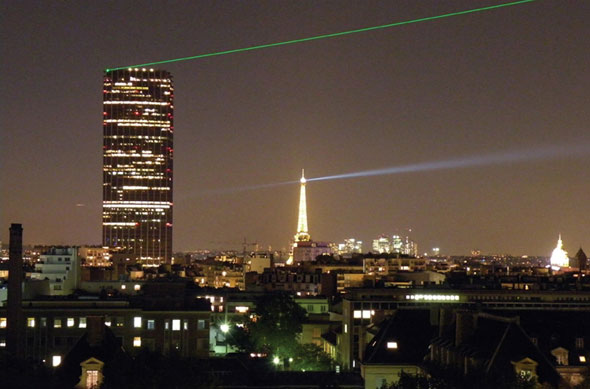The invisibles come to Paris
 |
| Photos courtesy of JLR/CNRS/APC |
How do you make the invisible visible? Astrophysicists face this challenge daily. Unlike astronomers who view stars through telescopes, astrophysicists study cosmic particles that are too small or dark to see directly. They infer the presence of cosmic rays and neutrinos—and hunt for dark matter—by looking at how these invisible particles affect the world around them.
In October, astrophysicists used magic, public lectures, and Paris' tallest skyscraper to teach the public how to use what you can see to peer at what you can't. Thousands of people, many of whom had probably never heard of astrophysics before, met with scientists at 50 events in 10 countries during the first European Week of Astroparticle Physics.
In Spain, magicians made objects vanish and reappear to explain how cosmic particles can exist beyond our sight.
In France, the national center for scientific research, CNRS, transformed 210-meter-tall Montparnasse Tower into a cosmic-ray detector. When cosmic rays collided with a muon detector on the roof, a laser shot a beam 1.2 kilometers across the sky to the Paris Observatory.
Linking the tower with the ancient astronomical observatory was a tribute to the contributions astronomy has made to the modern-day field of astrophysics. The urban light show also was a nod to German physicist Theodore Wulf, who in 1910 mounted an electrometer atop the Eiffel Tower to measure how the number of cosmic-ray detections increases with altitude.
Spectators joined physicists atop the Montparnasse Tower to see the cosmic-ray detector in action. Questions cascaded down on the physicists as the laser beam flashed above the city's Latin Quarter, in synchronization with the invisible cosmic rays coming into the detector.
-Arnaud Marsollier
Click here to download the pdf version of this article.






